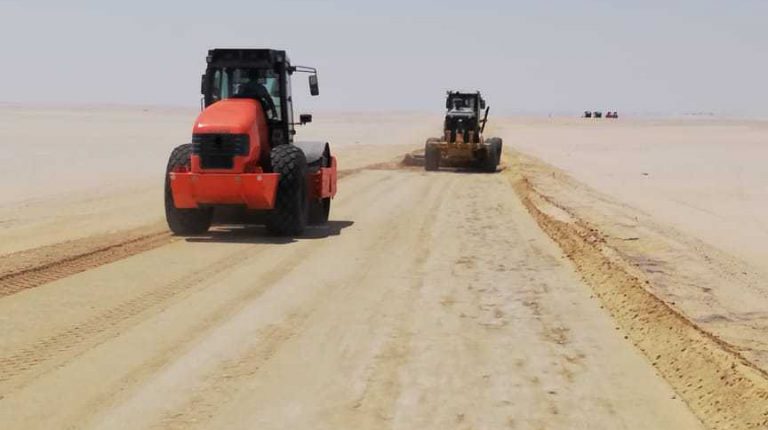Egypt’s Minister of Environment Yasmine Fouad recently inaugurated the construction of Wadi Al-Hitan Road, the first green road in the North African country.
The road is being constructed within the Wadi Al-Hitan (Whale Valley), which is a UNESCO World Heritage Site that has found a place on the 2018 IUCN Green List of Protected Areas, the new global standard for protected areas in the 21st Century.
Also Read: New contract awarded for Damietta Port Modernization Project in Egypt
Unlike traditional roads that are often constructed of material like asphalt which traps up to 90% of the sun’s heat, making some parts of a habitat impossible for native species to navigate on, the construction of 34 km Wadi Al-Hitan road will depend on recycling and utilize a special emulsion that mixes with soil to cut down on heat emissions while maintaining the natural color of the scenery that surrounds it.
Compared to typical roads, upon completion, this green road will be cooler, lessen noise pollution, and be less obtrusive. More importantly, it will be a statement, paving a path for eco-tourism in the Arab Republic, and a greater commitment to environmental renewal.
Significance of the Wadi Al-Hitan road project
The green road comes within the framework of the Egyptian ministry’s plan to develop and manage natural reserves according to international systems, in order to achieve the preservation of natural resources while maximizing economic, recreational, and social development opportunities.
It also aims to provide a distinct and enjoyable experience for visitors to the protectorate, which contributes to the promotion of eco-tourism in Egypt.
Fouad expressed her hope that the development witnessed by nature reserves will be a “real start to awareness of the importance of natural capital represented in our natural reserves and the importance of the role of youth, society and environmental partners in protecting the environment and biological diversity for us and for future generations.”
